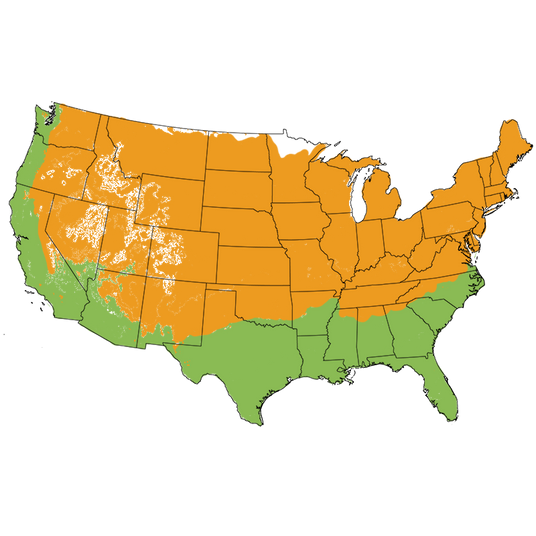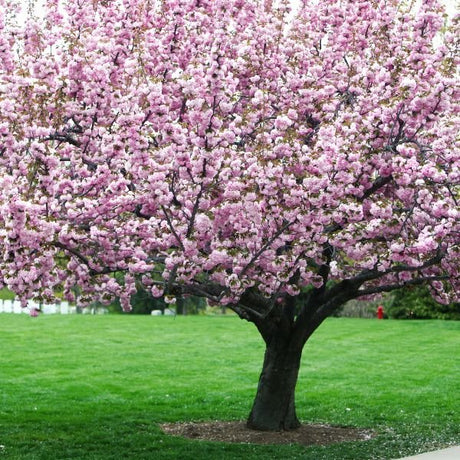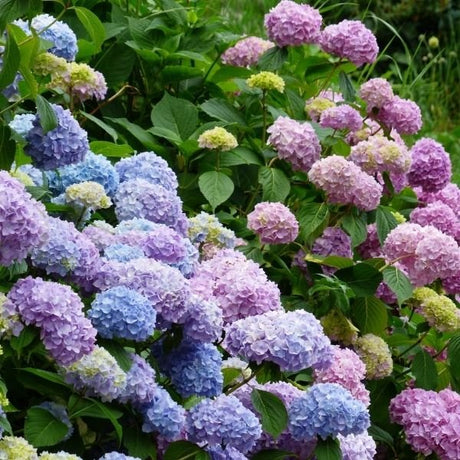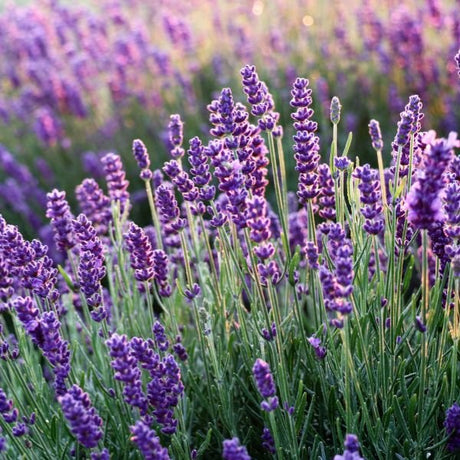Moro Blood Orange Tree
- Stay Protected with Plant Sentry ™
Moro Blood Orange Tree - 4x4x9 Inch Container 1-2 Feet is backordered and will ship as soon as it is back in stock.
To receive an email notification when our next crop is ready, please enter your email below..*
Plant Sentry™
Plant Sentry™
Plant Sentry is designed to protect both consumers and the nursery trade from invasive plant pests and diseases. Sites that display the Plant Sentry protection badge are protected from consumers buying and nurseries shipping material carrying invasive pests and diseases.
This proprietary eCommerce software prevents the shipment of a restricted plant to each state. The Plant Sentry system includes a shipment certification program. The Plant Sentry Compliance Officer works closely with NatureHills.com and each nursery or fulfillment center to ensure only compliant plants are sold to customers.
Click Here to learn more

Delivery and Shipping
Delivery and Shipping
Shipping
To obtain a more accurate shipment time-frame, simply enter your zip code in the “Find Your Growing Zone” box to the right. Our plants are grown all over the country and lead time on items may be different because of this. Once your order is placed, you will also receive the specific shipment time-frame information as part of your order confirmation. Once an item ships, you will receive shipment notification and tracking numbers, so you can follow along while your plant travels to your doorstep. We use FedEx, UPS, or USPS at our discretion.
Due to winter weather we have put a hold on shipping to the areas shown below in grey. You can still order now and we will ship the plant to you during an appropriate time for your zone.
Standard Shipping Rates
At Nature Hills we handle, package and ship the products you order with the utmost care to ensure healthy delivery. Shipping and handling charges are calculated based on the tables below. Please note that some items include an additional handling surcharge, these will be noted on the item's product page.
| From | To | S&H |
|---|---|---|
| $0 | $19.99 | $24.99 |
| $20 | $49.99 | $29.99 |
| $50 | $69.99 | $34.99 |
| $70 | $99.99 | $39.99 |
| $100 | $129.99 | $44.99 |
| $130 | $149.99 | $48.99 |
| $150 | $150+ | Approx 28% |
Click here to see our full rates
Buying Options for Plants
Nature Hills sells a large variety of plants with several options available. Plants are offered in both potted containers and as dormant bare root without soil. Here is a helpful resource to understand your options as you create a beautiful landscape with help from Nature Hills.
Ever wonder what a larger plant will mean for your landscape? Container Sizes are really all about the age of the plant!
Seasonally, Nature Hills offers hand selected, high quality bare root trees, shrubs and perennials. Bare root plants are sold by height from the top of the root system to the top of the plant. Plants may be taller than the height minimums.
- Popular sizes of select trees are 1 foot, 2 feet, 3 feet, etc.
- Popular sizes of select bare root plants is 1 foot, 18 inches, etc.
Nature Hills Container Size by Volume
Keep in mind, specific varieties and different growing conditions can affect the rate at which plants grow. Variations in size may occur.
| Young Plants to 18 Months | ||
|---|---|---|
| Size | Volume | |
| 2"x2"x3" | Ranges from | .18 to .21 dry quarts / .198 to .23 dry liters in volume |
| 4.5" Container | Equal to | .65 dry quart / .72 dry liter in volume |
| Sprinter Pot | Equal to | .63 dry quart / .69 dry liter in volume |
| 4" Container | Ranges from | .31 to .87 / .35 to .96 dry liter in volume |
| 6" Container | Equal to | 1.4 dry quarts / 1.59 dry liters in volume |
| 1 Quart | Equal to | 1 dry quart / 1.1 dry liter in volume |
| 5.5" Container | Equal to | 1.89 of a dry quart / 2.08 dry liters in volume |
| 4"x4"x5" | Ranges from | .8 to 1.1 dry quarts / .88 to 1.2 dry liters in volume |
| 4"x4"x6" | Ranges from | 1.0 to 1.3 dry quarts / 1.1 to 1.41 dry liters in volume |
| 4"x4"x9" | Ranges from | 1.1 to 2.1 dry quarts / 1.2 to 2.3 dry liters in volume |
| 4"x4"x10" | Ranges from | 1.7 to 2.3 dry quart / 1.87 to 2.53 dry liters in volume |
| Plants 18 Months - 2.5 Years Old | ||
|---|---|---|
| Size | Volume | |
| 2 Quart | Equal to | 2 dry quarts / 2.2 dry liters in volume |
| #1 Container | Ranges from | 2.26 to 3.73 dry quarts / 2.49 to 4.11 dry liters in volume |
| 5"x5"x12" | Equal to | 3.5 to 4.3 dry quarts / 3.85 to 4.74 dry liters in volume |
| Plants 2 - 4 Years Old | ||
|---|---|---|
| Size | Volume | |
| #2 Container | Ranges from | 1.19 to 1.76 dry gallons / 5.24 to 7.75 dry liters in volume |
| #3 Container | Ranges from | 2.32 to 2.76 dry gallons / 10.22 to 12.16 dry liters in volume |
| Plants 3 - 5 Years Old | ||
|---|---|---|
| Size | Volume | |
| #5 Container | Ranges from | 2.92 to 4.62 dry gallons / 12.86 to 20.35 dry liters in volume |
| #6 Container | Ranges from | 5.25 to 6.01 dry gallons / 23.12 to 26.42 dry liters in volume |
| #7 Container | Ranges from | 5.98 to 6.08 dry gallons / 26.34 to 26.78 dry liters in volume |
Plant Highlights
Moro Blood Orange Tree highlights at a glance!
Plant Highlights
Plant Highlights
-
Brand
-
Botanical Name
-
Growing Zones
-
Mature Height
-
Mature Spread
-
Sun ExposureFull Sun
-
Moisture
-
Soil
-
Growth RateMedium
-
Flower Color
-
Pollinator Friendly
-
Pollinator Required
-
Fragrant
-
Pruning Time
-
Bloom PeriodLate Spring
-
Harvest Time

Growing Zones 8-11 (patio 4-11)
As the #1 variety of Blood Orange grown in the United States, the Moro Blood Orange Tree (Citrus sinensis 'Moro') is a true standout! It features dependable, deep red coloring that is achieved in USDA zones 8 - 11. This is superior to other Blood Orange varieties that only produce deep red flesh in perfect conditions.
The fragrant white blossoms are divinely scented and the glossy evergreen leaves make this a fantastic tree all year round! An Italian Orange, Moro has a rich, tropical flavor and deep red flesh. The red-colored flesh will continue to deepen when kept cold in storage where it will hold for about 3 weeks ready to eat. Quite ornamental, its peel is usually blushed with a beautiful burgundy color.
Vivid Moro offers a delicious, almost tropical experience! Very high Vitamin C, potassium and carotene content, its flavor has a hint of raspberry with tropical overtones and is a bit sweeter than others. When the fruit matures, the flesh is deep red and usually seedless. The fruit hangs for a long time and continues to get deeper in color!
Planting and Application:
Moro Blood Orange is used in a variety of different ways from marmalades to gelatos and sorbets. Include some slices in your morning smoothie for a healthy blast of flavor and color. It's great in salads and sliced on a cheese platter. Of course, fresh off the tree is also popular! There is nothing better than homegrown fruit!
Outdoors, Moro are beautiful accents and specimen trees. Keep potted on a porch or patio during warm weather, then move your tree indoors and place it in a sunroom or well-lit, protected patio for the winter. If inside, place it near a sunny window, and you may need to provide extra artificial lighting to support the ripening fruit.
- Very Healthy Dark Red Fruit
- Dependable Blood-Red Flesh
- Deeply Pigmented Flesh
- Sweet & Juicy
- Mid-Season & Long Hang Time
#ProPlantTips for Care:
Oranges need full sun locations with good air circulation, favoring the morning sun. Plant in well-drained soil that's moderately moist and on the acidic side, allowing the roots to dry out slightly between waterings. Grow all Citrus on the dry side, ensuring that container plants have several drainage holes and a loose, acidic soil mixture. Add a layer of mulch over the root system.
Protecting Container Citrus From Cold
If you're growing these tropical trees in the ground in USDA zones 8, they need to be planted in a sheltered spot to avoid the worst of the chill. If a spot like that is unavailable, then you are better off planting in a large, deep container, likewise, for USDA zones 7 and under, plan on bringing your tree indoors for the winter. A rolling plant pot will help with moving your tree around and you can prune these trees to any size to keep them manageable.
In borderline growing zones, begin slowly acclimating your tree indoors or into a protected location, eventually moving your tree inside in bright indirect sun for the winter if the temperatures in your area ever dip below that 40F range. In spring, reverse this process and begin acclimating your tree to again be back out in the full sun all summer. This reduces stress and leaf drop.
Like all of our Citrus, these trees are a minimum of three years old, have extensive branching, and have some of the largest root systems available. We take pride in delivering you the highest quality Citrus Trees with healthy roots and full, well-established stems and foliage.
You'll want to plan to repot them every 3 to 4 years. Always shift to the next size container and avoid going too much larger than the current pot size.
- Full Sun
- Well-Drained Acidic Soil
- Low Moisture & Regular Fertilizer
- Prune After Fruiting
- See Our Blog for Citrus Tree Care
If you are a foodie, you'll want to add the productive and dramatic colored Moro Blood Orange tree to your collection! Order yours at NatureHills.com today!
Deep Red Color, Delicious Flavor
First discovered as a sport of the Sanguinello Blood orange in Sicily, Italy in the mid-20th Century, the Moro is one of the newest of the popular Blood Oranges varieties.
The perception of less flavor was shaken off due to the dependable dark red color of the flesh, which made it an immediate novelty hit. However, in no time the wonderful flavor of the Moro was acknowledged by growers and consumers alike.
Citrus sinensis 'Moro' is unlike most of the other popular varieties of Blood Oranges originated in Sicily, Italy and is considered an Italian Blood Orange. The Sanguinello and Torroco are both varieties from Spain.
The name Moro comes from the Moorish culture, which in the 8th century, dominated the Mediterranean region. The word was used to describe dark-skinned people of Africa. In time, it became a word common to anything with dark pigment.
Though once thought to be of lesser quality than the most popular Blood Oranges, today the Moro is the third most common citrus sold in Europe based on the rich tropical flavor, the deep red flesh, along with the wide range of adaptability.
The immediate success of the Moro in California is due to the fact that it ripens much earlier than the Sanguinello or Torroco. Moro is a January ripening fruit, putting it at least a month sooner to ripen than the other varieties. Moro would color where other Blood Oranges would not, such as in the southern coastal areas of the United States.
The Moro develops deep rich red in ideal conditions, but still shows a decent red color and develops its great flavor in less than ideal conditions. This is a positive trait, unlike how the other two popular selections display.
The Moro became a big hit with the retail nurseries, and they were fast to offer this exciting new citrus variety based on those virtues. In time, in California, the Moro became the #1 Blood Orange recommended.
As the health-conscious consumer movement took hold, the high antioxidant content that came by way of the dark red pigmentation - called anthocyanins - began to be promoted. The Moro, like any citrus, was rich in Vitamin C, potassium and folate, all important to good health.
Today, Moro Blood Oranges can be found in everything from jams and jellies to IPA beers. Moro is noted for its wide range of adaptations and is a popular variety for Home Growers and Farmer's Market growers.










